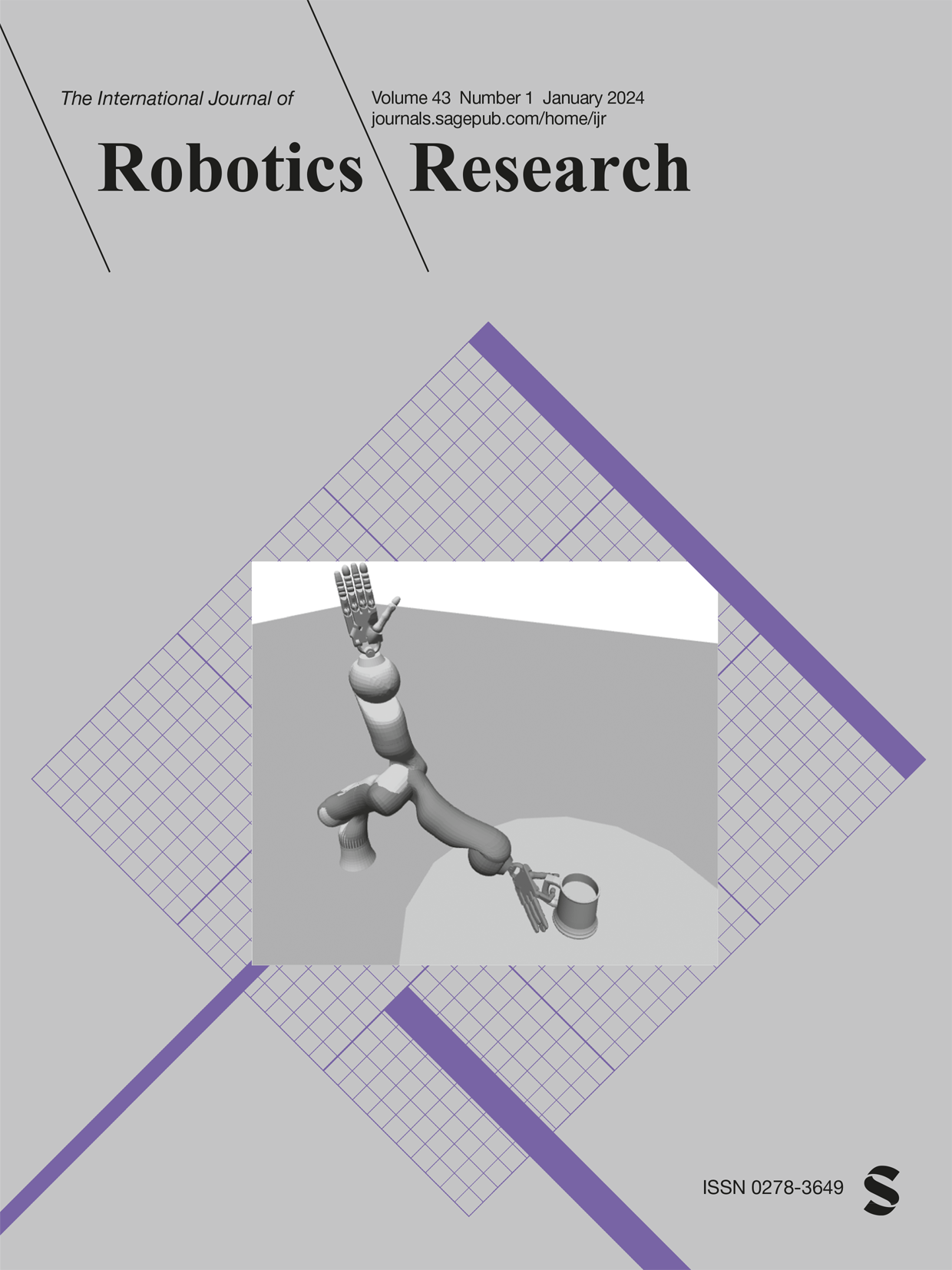Robotic drilling for the Chinese Chang’E 5 lunar sample-return mission
IF 5
1区 计算机科学
Q1 ROBOTICS
引用次数: 1
Abstract
On December 2, 2020, a 2-m class robotic drill onboard the Chinese Chang’E 5 lunar lander successfully penetrated 1 m into the lunar regolith and collected 259.72 g of samples. This paper presents the design and development, terrestrial tests, and lunar sampling results of the robotic drill. First, the system design of the robotic drill, including its engineering objectives, drill configuration, drilling and coring methods, and rotational speed determination, was studied. Subsequently, a control strategy was proposed to address the geological uncertainty and complexity of the lunar surface. Terrestrial tests were conducted to assess the sampling performance of the robotic drill under both atmospheric and vacuum conditions. Finally, the results of drilling on the lunar surface were obtained, and the complex geological conditions encountered were analyzed. The success of the Chinese Chang’E 5 lunar sample-return mission demonstrates the feasibility of the proposed robotic drill. This study can serve as an important reference for future extraterrestrial robotic regolith-sampling missions.中国嫦娥五号月球样本返回任务的机器人钻探
2020年12月2日,中国“嫦娥五号”月球着陆器上的一个2米级机器人钻头成功深入月球表层1米,采集了259.72克样本。本文介绍了机器人钻机的设计与研制、地面试验和月球取样结果。首先,对机器人钻机的系统设计进行了研究,包括工程目标、钻机配置、钻进取芯方法、转速确定等。随后,针对月球表面地质的不确定性和复杂性,提出了一种控制策略。进行了地面测试,以评估机器人钻机在大气和真空条件下的取样性能。最后,给出了在月球表面钻探的结果,并对所遇到的复杂地质条件进行了分析。中国嫦娥五号月球样本返回任务的成功证明了机器人演练的可行性。该研究可为未来的地外机器人风化层取样任务提供重要参考。
本文章由计算机程序翻译,如有差异,请以英文原文为准。
求助全文
约1分钟内获得全文
求助全文
来源期刊
CiteScore
22.20
自引率
0.00%
发文量
34
审稿时长
6-12 weeks
期刊介绍:
The International Journal of Robotics Research (IJRR) has been a leading peer-reviewed publication in the field for over two decades. It holds the distinction of being the first scholarly journal dedicated to robotics research.
IJRR presents cutting-edge and thought-provoking original research papers, articles, and reviews that delve into groundbreaking trends, technical advancements, and theoretical developments in robotics. Renowned scholars and practitioners contribute to its content, offering their expertise and insights. This journal covers a wide range of topics, going beyond narrow technical advancements to encompass various aspects of robotics.
The primary aim of IJRR is to publish work that has lasting value for the scientific and technological advancement of the field. Only original, robust, and practical research that can serve as a foundation for further progress is considered for publication. The focus is on producing content that will remain valuable and relevant over time.
In summary, IJRR stands as a prestigious publication that drives innovation and knowledge in robotics research.

 求助内容:
求助内容: 应助结果提醒方式:
应助结果提醒方式:


